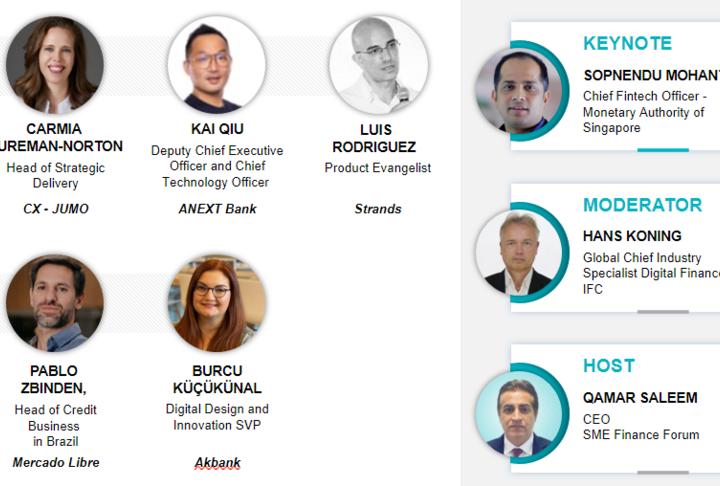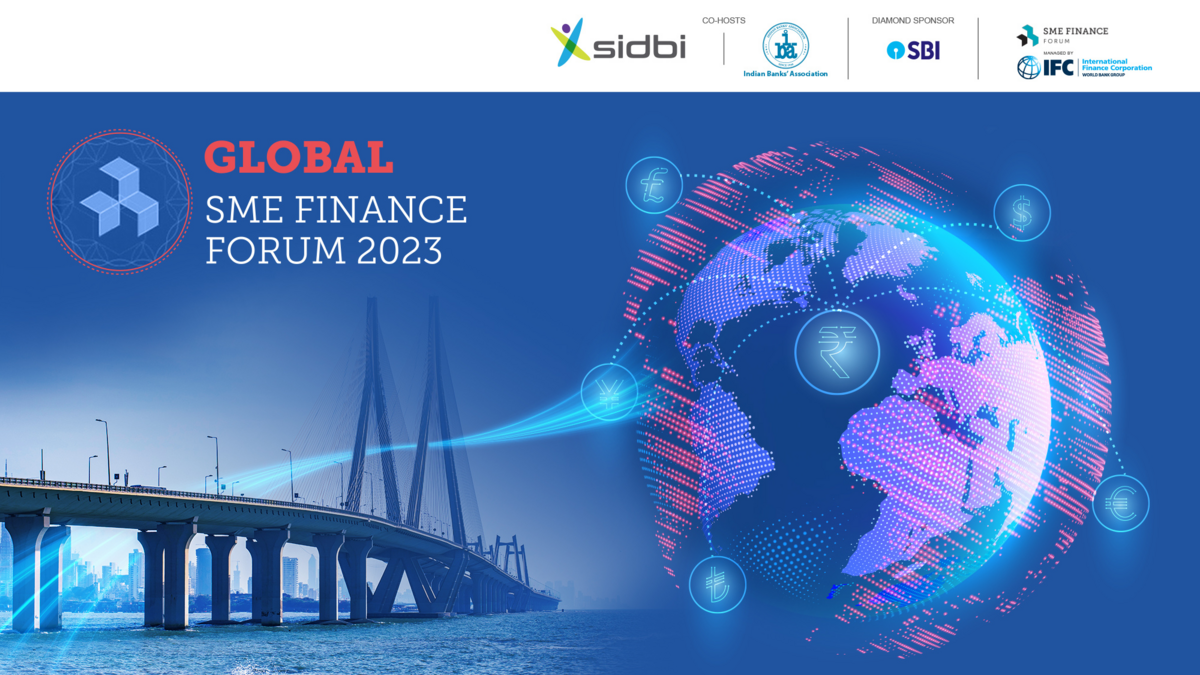Blog
Trends in Blockchain: Driving the Growth of SME Finance
Dec 09, 2020

A webinar summary
Blockchain is no longer just about Bitcoin. With the rapid development of enterprise-grade solutions, we're witnessing a proliferation of blockchain use cases in the banking industry. Ivy Luu (nanopay Corporation) and Dengfeng Zhang (Linklogis) joined the panel to discuss the past, present and future impact of technological changes in blockchain solutions, SME finance and supply chain finance. The session was moderated by Lechi Zhang (SME Finance Forum).
Lechi Zhang of SME Finance provides an overview of blockchain innovation and its implications in the financial industry. Bitcoin, a blockchain technology emerged after the global financial crisis, at the time, blockchain technology was a peer to peer, fully decentralized or distributed network of notes where the notes verified transactions through a mining process. Soon Ethereum, which was extremely programmable, followed, . Developers could now easily create decentralized applications on top of existing networks. At the same time, the concept of token economics became very popular. According to this concept, instead of using traditional economic incentives, crypto rewards are employed to incentivize stakeholders in the blockchain ecosystems. Both Bitcoin and Ethereum are public open blockchain networks and appeal to the retail user segment but are still far away from the mainstream financial adoption. Therefore, a lot of Wall Street veterans and tech giants saw the potential of blockchain in the financial sector. So, they created some new blockchains which are more compliant with policies and regulations, more private and tailored made to enterprise solutions. Hyperledger by IBM and Corda by R3 are good examples. Since newer technologies are using different mathematical computations and cryptography in financial transactions, there is no need for token economics to incentivize behaviors. Instead, the more significant challenge is scalability because with siloed networks being built, one needs to create more bridges for interoperability and, with more participants added to the network one needs to build additional channels for private communications. Now, we are moving towards the third stage of development where we see the rise of purpose-built blockchain that are technology agnostics and domain specific. Unlike others, they are focusing on solving only financial issues.
Ivy Luu of nanopay Corporation shares her insights on her organization, blockchain technology and how this innovation has impacted banking and fintech industries. Nanopay is a software payment’s company headquartered in Toronto, Canada. Just last year, Nanopay won the Blockchain of the Year award in the Canada fintech community. Nanopay’s technology operates on a centralized blockchain ledger; therefore, it does not need to reach consensus. Thus, making their blockchain technology very scalable. Moreover, Nanopay’s technology enables one to process 30x faster than the average DLT blockchain solution. Nanopay also deals with digital fiat, so they do not need to convert into cryptocurrency at any point in the transaction. Furthermore, there are certain misconceptions regarding the blockchain technology that one should know to understand their technology better. Especially, one must be aware of the different variations in blockchain technology: it can be decentralized or centralized, it can be permission less or permissioned, and it can be on a public or private network. The beauty of blockchain is that it is immutable, transparent, synchronous, cost-effective and has an innovative scope. Indeed, blockchain has some concerns of scalability (with a centralized blockchain there are no concerns), interoperability (cross-chain tech companies help integrate) and lack of a regulatory framework (regulatory policies needs to keep up with new tech). Keeping these concerns in mind, Nanopay has developed a product line on centralized blockchain called Liquid. This product has three distinct use cases: cash management and reconciliation, liquidity management solutions for SMEs, and assurance of faster and cheaper cross border payments. A final big takeaway is a realization that blockchain is an innovation tool which is extremely beneficial and powerful individually but even more when connected with other technologies such as AI, ML, API and VAM.
Dengefeng Zhang of Linklogis, a fintech company based in China, discussed his insights on blockchain-based solutions in supply-side financing. In a typical supply chain, as the size of the supplier gets smaller, their difficulty in securing financing gets larger in the system. Banks are most comfortable working with Tier 1 suppliers because their size is big, information is available, and liquidity is not a problem. Whereas Tier N suppliers (smaller ones in the chain) have small collateral available and tracing back connection with the anchor buyer is not easy. Thus, Tier N suppliers have difficulty in securing financing from banking institutions. Linklogis innovates the supplier chain finance solutions by relying on the blockchain technology, which is called Deep-Tier Financing. Linklogis technology digitalizes the accounts payable from the anchor buyer, which in return creates a digital payment obligation. When the Tier N supplier receives the digital payment obligation, they have three options: 1) they can hold it to maturity which the anchor buyer can pay 2) they can transfer it in full or partial amount to next Tier supplier 3) they can go to a bank to discount it. The advantage of this technology is that one can break it down into small pieces, and when the Tier N supplier receives a split digital payment obligation it still bears high quality credit of the anchor buyer. For SMEs who get digital payment obligations, they can receive a lower interest rate and have easier access to financial support. The beauty of this solution is that it brings great benefits for those SMEs in the second or third tier of the supply chain who cannot qualify for individual financing and now are able to get financing very quickly after joining the deep tier financing model. For cross-border deep tier financing, it is beneficial to work with industry partners.
The blockchain technology has evolved so much from bitcoin and is no longer P2P or decentralized. The technology offers much potential in transforming the way business can be done and supported. Undeniably, the speakers provided great in-depth insights into how blockchain can help financial institutions and other partners reduce costs, mitigate risks, automate workflows and drive the growth of SMEs in future.










